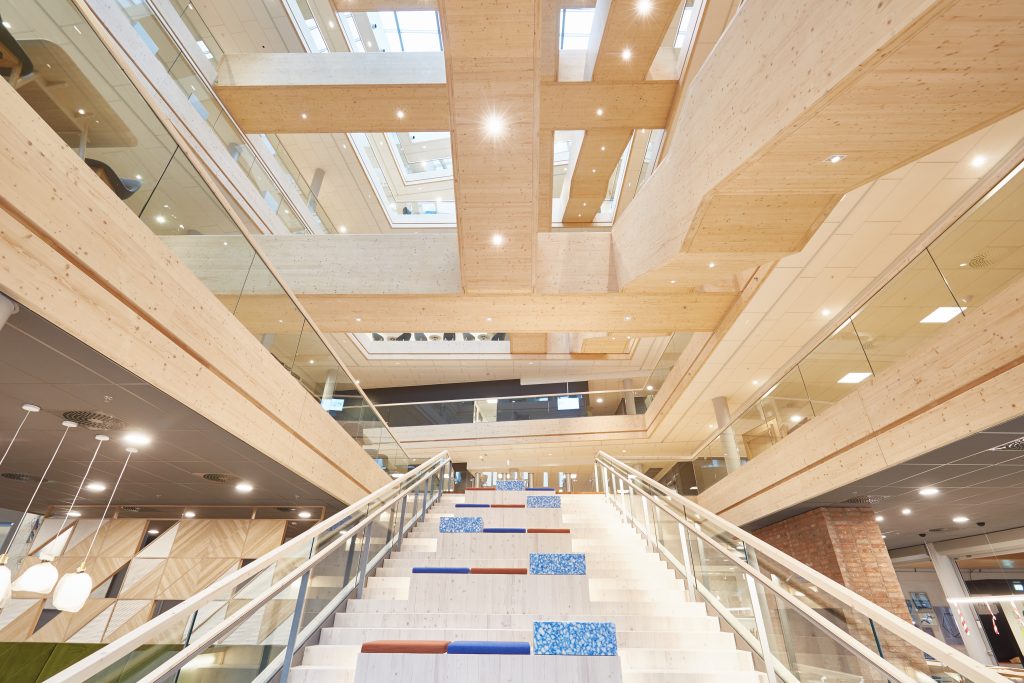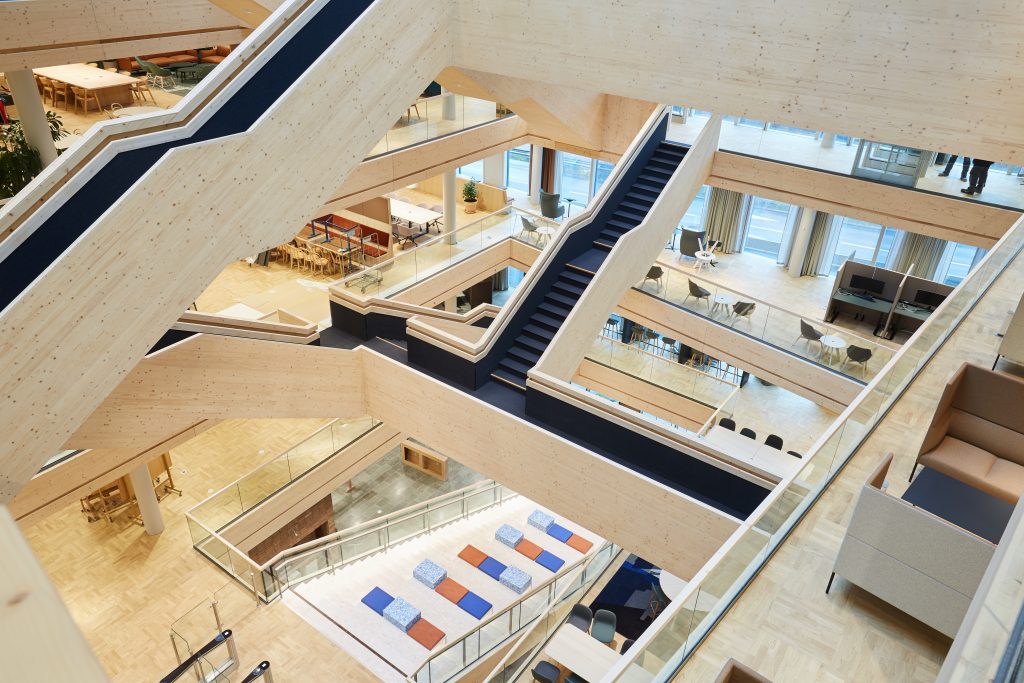CO2 reduction is the goal

The article has been published in June 2021 in Wood magazine 1/2021.
Text: Anu Turunen, photos: NCC
Read the article in Finnish: CO2-vähennys tavoitteena
Inspired by Valle Wood, NCC has looked into using wood in the development stages of projects for commercial space construction in Finland.
Eelis Rytkönen, NCC’s urban developer “hippie”, as he calls himself, says that the construction company’s goal is to replace steel and concrete structures with wood to the extent possible to maximise the reduction in CO2 emissions without the building’s U-value (thermal transmittance) suffering. Studies are being done of various commercial space projects, and so far wood has been included in the interior surfaces. “It would appear that the cleaner energy production becomes, the more relevant wood and other low-carbon materials will become as a building materials thanks to the lowered carbon footprint from the minimised emissions during use,” says Rytkönen.

Wood improves the customer experience
According to Rytkönen, the customer experience at Valle Wood has been very positive. “The positive experience appears to be more comprehensive the more wood has been used in the building. According to users, the extensive use of wood makes the building different in a positive way and gives it a pleasant atmosphere.” With wood surfaces alone, the experience was not considered to be as comprehensive, but even just as a surface material people perceive wood to be pleasant and as promoting their health. For real-estate agents, it has been intriguing to see how eagerly potential tenants have been touching the walls during site visits.
Challenges hinder the transition to wood construction
According to NCC, the transition to wood construction is slowed down by the differing paces of design work and on-site construction. Designing wood buildings takes longer because there is so little previous experience to build on. Also, the tolerance for errors in design and production is lower than in concrete construction. Wood construction is very resource-intensive in the frame construction phase, and the design phase doesn’t last long. Sharing resources between construction sites becomes more challenging as the rhythms of various construction phases change. According to Rytkönen, wood and concrete also have different limits when it comes to the size and shape of a potential building.
Rytkönen also says that preliminary investigations have found no obvious differences in durability and serviceability between concrete and wood, for example. “It is hard to predict how wood will behave long term in harsh coastal weather conditions, which is why we have opted to try out our first projects inland.”
NCC sees the potential of wood construction in adding new storeys to existing building stock. Smart joints and the ability they provide for dismantling and reusing wood could also serve more temporary solutions.
Based on preliminary reviews, wood construction appears to be more expensive. “This is partly due to the small size of the market compared to concrete construction,” Rytkönen points out and continues, “Design and construction expertise are still underdeveloped in wood construction when compared to concrete construction.”
Adequate impact sound insulation in multi-storey buildings is also a challenge in wood buildings from a carbon footprint perspective. The need for reinforced intermediate floors in a wood building may lead to higher emissions compared to an all-concrete solution. “This is one of the reasons why we believe that the smartest solution functionally, technically and environmentally will be a hybrid of different materials.”

Stockholm headquarters serve as an example
NCC’s own group headquarters are a good example of the company’s hybrid construction. The design of the head office, which was completed in Stockholm’s Solna district in 2019, was based on the desire to promote achieving sustainable development goals and to create a working environment that improves the health and well-being of employees. The building is BREEAM Excellent certified and, despite not being entirely made of wood, an excellent example of modern wooden architecture. The large lobby is the heart of the building. Its most striking elements are the wooden staircase, the footbridge structures between the storeys, and the visible LVL beams.
Wood adds a feeling of security
Together the wood surfaces and the daylight flooding the lobby make the environment human and warm, which makes people more open to spontaneous encounters. The openness of the wood building makes it easier to get a general idea of the building and to find places, and it increases people’s sense of security. The aim is to create a pleasant experience for everyone moving through the building with visible stairs and well-laid out routes.
Many NCC employees spend a lot of time at construction sites or at customer premises, but they are beginning to find their own headquarters increasingly appealing. We should take heed of this lesson over here in Finland, as well!
